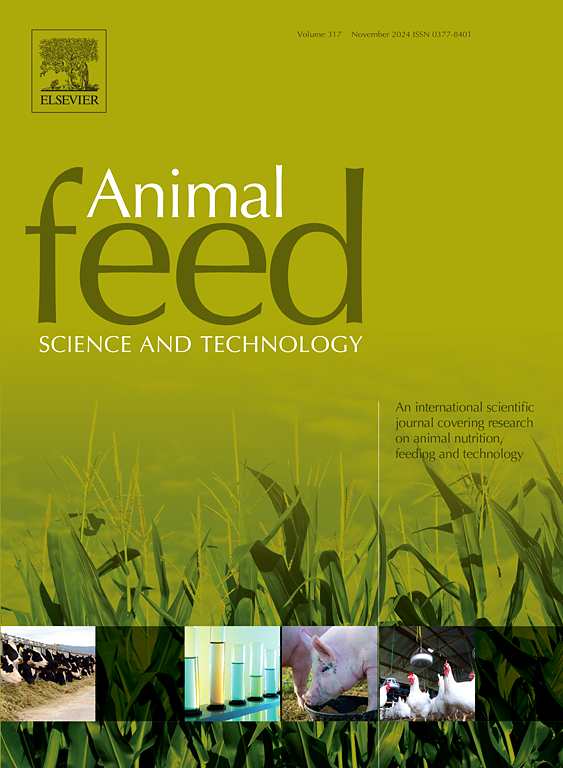Effects of Bacillus subtilis addition to milk replacer on growth performance, nutrient digestibility, intestinal microbiota, and short-chain fatty acid concentration of Hu lambs
IF 2.5
2区 农林科学
Q1 AGRICULTURE, DAIRY & ANIMAL SCIENCE
引用次数: 0
Abstract
We aimed to investigate the effects of adding Bacillus subtilis to milk replacers on the incidence of diarrhea, growth performance, intestinal microbiota composition, and short-chain fatty acid (SCFA) production in newborn Hu lambs. Thirty newborn lambs with similar genetic backgrounds and initial body weights were selected and nursed by their dams for 4 days before transitioning to a milk replacer. At age 7 days, the lambs were randomly assigned to two experimental groups of 15 lambs each: CON (basic milk replacer feeding) and BS (basic milk replacer feeding supplemented with 0.2 % B. subtilis). At age 28 days, eight lambs in each group were randomly euthanized, and their colonic and cecal contents were collected for microbiological and SCFA analyses. The lambs were monitored daily to determine the incidence of diarrhea. The BS group showed significantly increased average daily feed intake and gain and significantly reduced incidence of diarrhea. Furthermore, dry matter digestibility and crude protein and ether extract content increased in the BS group compared with those in the CON group. Increased acetate and total SCFA concentrations were noted in the colon and cecum, with elevated propionate levels specifically in the cecum. Microbiota analysis revealed that B. subtilis supplementation enhanced microbial diversity and beneficially modulated bacterial communities. Potentially harmful bacteria showed significantly decreased abundance in the colon (Campylobacterota by 11.09 % and Fusobacteriota by 2.98 %), whereas beneficial bacteria exhibited increased abundance (Firmicutes by 8.9 %, Actinobacteriota by 3.59 %, Lactobacillus by 5.92 %, and Bifidobacterium by 3.18 %). Similar trends were observed in the cecum, with decreases in Campylobacterota (4.82 %) and Fusobacteriota (3.12 %) and increases in Bacteroidota (4.11 %), Lactobacillus (3.75 %), and Prevotella (3.59 %). These findings indicate that adding 0.2 % B. subtilis to the milk replacer is an effective approach for enhancing lamb growth performance, maintaining intestinal health, and improving the intestinal microbiota.
求助全文
约1分钟内获得全文
求助全文
来源期刊

Animal Feed Science and Technology
农林科学-奶制品与动物科学
CiteScore
6.00
自引率
6.20%
发文量
266
审稿时长
3 months
期刊介绍:
Animal Feed Science and Technology is a unique journal publishing scientific papers of international interest focusing on animal feeds and their feeding.
Papers describing research on feed for ruminants and non-ruminants, including poultry, horses, companion animals and aquatic animals, are welcome.
The journal covers the following areas:
Nutritive value of feeds (e.g., assessment, improvement)
Methods of conserving and processing feeds that affect their nutritional value
Agronomic and climatic factors influencing the nutritive value of feeds
Utilization of feeds and the improvement of such
Metabolic, production, reproduction and health responses, as well as potential environmental impacts, of diet inputs and feed technologies (e.g., feeds, feed additives, feed components, mycotoxins)
Mathematical models relating directly to animal-feed interactions
Analytical and experimental methods for feed evaluation
Environmental impacts of feed technologies in animal production.
 求助内容:
求助内容: 应助结果提醒方式:
应助结果提醒方式:


